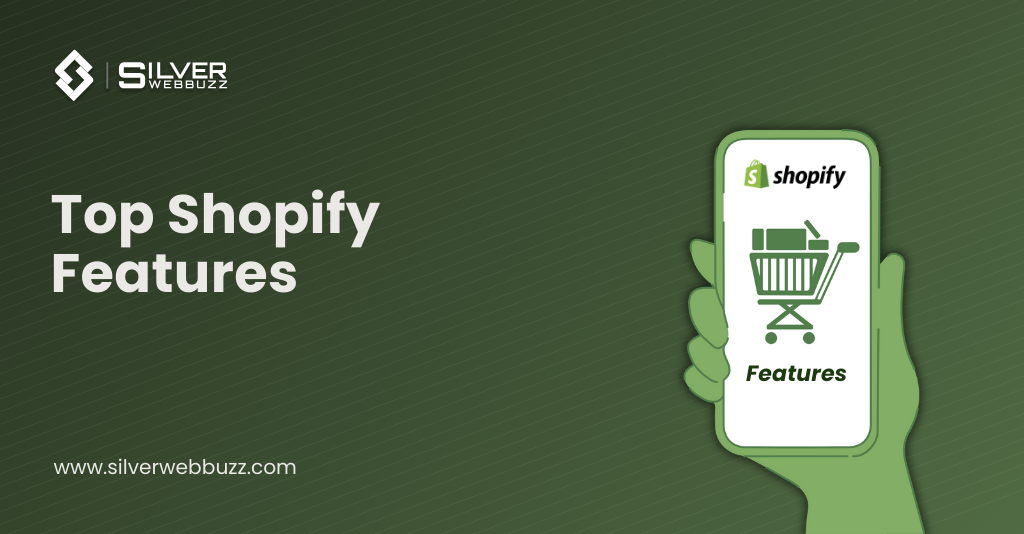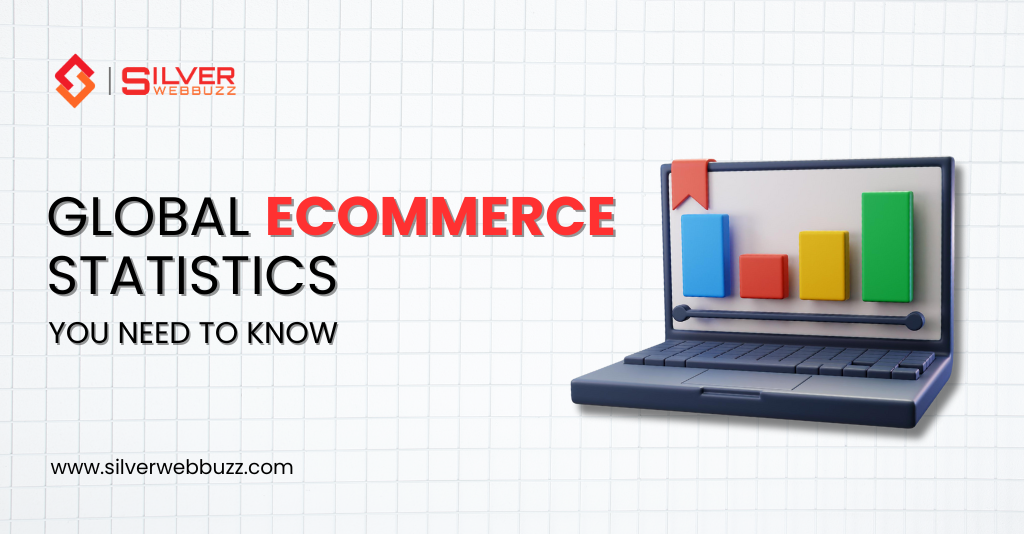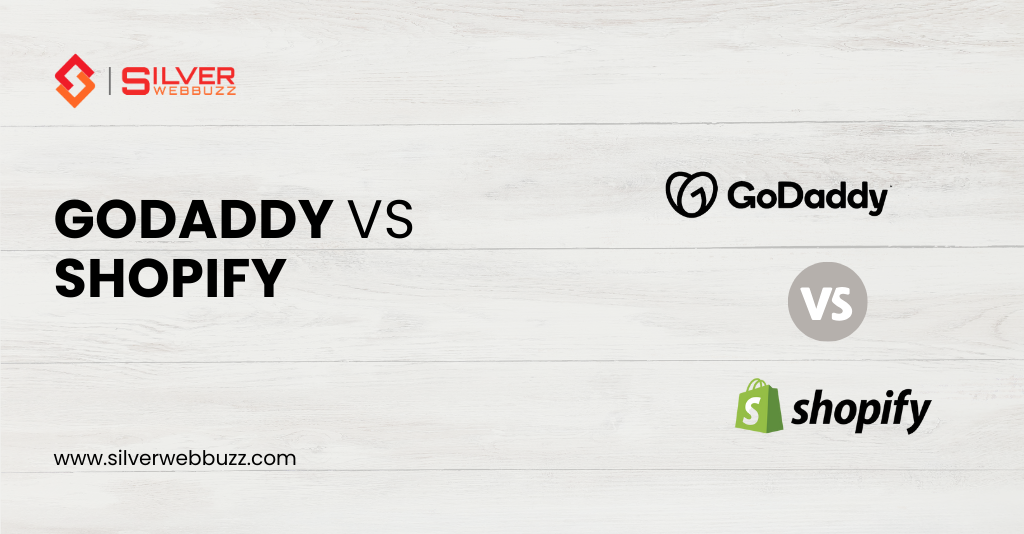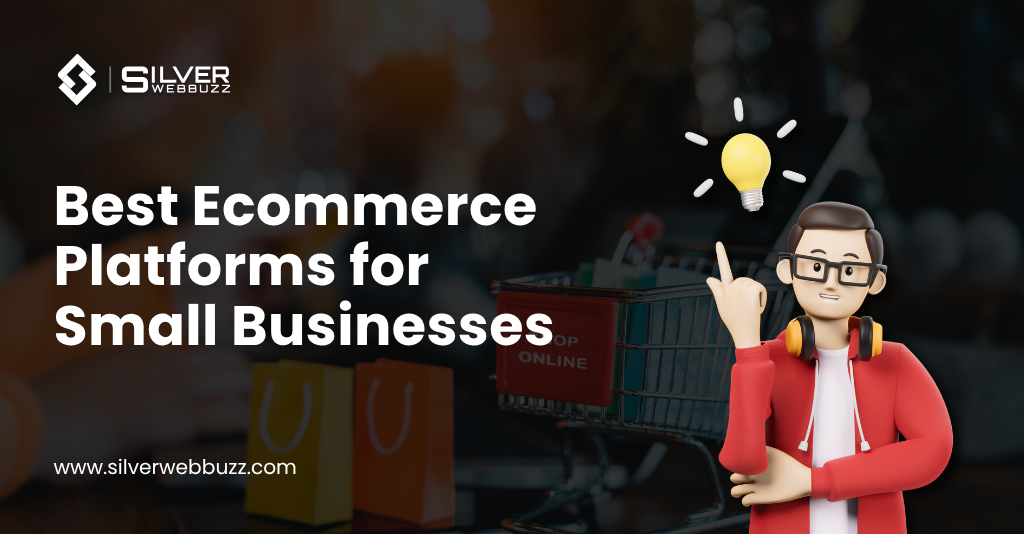In 2025, Shopify is no longer just an eCommerce platform—it has become a complete business ecosystem for brands of all sizes. With global online sales projected to reach $7.9 trillion by 2030 (Statista), staying competitive requires more than a well-designed store. Businesses need advanced tools to streamline operations, personalise customer experiences, and drive conversions.
This is why Shopify continues to expand its feature set each year, offering merchants new ways to sell smarter, automate processes, and connect with customers across multiple channels. From AI-driven tools to built-in marketplace integrations, Shopify’s latest innovations in 2025 are designed to help merchants increase revenue, reduce costs, and scale globally.
The following sections break down the most impactful Shopify features you should leverage in 2025 to maximize growth and stay ahead of the competition.
AI-Powered Shopify Features (Smart Recommendations, AI Product Descriptions)
Artificial Intelligence is one of the biggest upgrades shaping Shopify in 2025. Shopify has introduced AI-driven tools that directly improve both the customer experience and the merchant workflow.
1. Smart Product Recommendations
AI algorithms now analyze browsing behavior, purchase history, and real-time engagement to deliver highly personalized product suggestions. This increases average order value (AOV) and boosts repeat purchases. For example, AI can recommend complementary products—like showing matching shoes when a customer buys a dress.
2. AI-Generated Product Descriptions
Shopify’s built-in AI assistant allows merchants to generate SEO-friendly product descriptions quickly. Instead of spending hours writing content, businesses can create compelling descriptions tailored to brand voice and optimized for search visibility. This reduces workload and ensures consistency across hundreds of SKUs.
3. Enhanced Customer Service with AI
Chatbots powered by Shopify’s AI integrate seamlessly into storefronts, helping answer FAQs, process returns, and provide real-time support. This improves customer satisfaction while lowering operational costs.
By embedding AI into the sales and support journey, Shopify enables merchants to save time, scale faster, and deliver the type of personalized shopping experience that customers now expect.
New Checkout & Shop Pay Features for Higher Conversions in 2025
Checkout is the most critical stage of the buying journey, and in 2025 Shopify has doubled down on optimizing this process. A faster, frictionless checkout directly translates into higher conversion rates and lower cart abandonment.
1. One-Page Checkout
Shopify now offers a simplified one-page checkout experience. Instead of multiple steps, customers can enter shipping, payment, and confirmation details on a single screen. This reduces drop-offs and makes the process faster across mobile and desktop.
2. Upgraded Shop Pay
Shop Pay, Shopify’s accelerated checkout, has expanded with new features. Returning customers can now check out in as little as one tap, while new biometric authentication ensures secure and instant payments. Shop Pay also integrates installment options, giving buyers flexibility to pay over time.
3. Conversion Boosting Features
Merchants benefit from features like smart address validation, automatic tax calculation, and localized currency display. These small but powerful upgrades build trust and remove common friction points that often block conversions.
By refining checkout and upgrading Shop Pay, Shopify gives merchants the tools to reduce cart abandonment and turn more browsers into paying customers.
Built-in Shopify Marketplace Integrations (Amazon, Walmart, TikTok Shop)
In 2025, selling on multiple platforms is no longer optional—it’s essential for growth. Shopify has made this easier with built-in integrations that allow merchants to list and manage products across leading marketplaces directly from their Shopify dashboard.
1. Amazon Integration
Merchants can now sync inventory, pricing, and product details with Amazon in real time. Orders from Amazon flow directly into Shopify, ensuring centralised fulfilment and accurate stock management.
2. Walmart Marketplace
Shopify’s Walmart integration allows sellers to reach millions of U.S. shoppers. Features like automated product mapping and pricing adjustments make it easy to scale without managing Walmart separately.
3. TikTok Shop
With TikTok’s explosive growth in social commerce, Shopify has deepened its integration. Merchants can tag products in TikTok videos, manage sales within Shopify, and leverage TikTok’s algorithm-driven reach to drive discovery and conversions.
These integrations eliminate the need for third-party connectors, reduce errors, and save time. Most importantly, they allow merchants to reach customers wherever they shop—whether that’s on Amazon, Walmart, or inside a social app like TikTok.
Subscription & Membership Features (Recurring Revenue Growth)
Recurring revenue has become a priority for eCommerce brands, and in 2025, Shopify will provide stronger tools to support subscriptions and memberships. These features help businesses build predictable income streams while improving customer loyalty.
1. Native Subscription Management
Shopify now includes built-in subscription options without requiring heavy third-party apps. Merchants can offer weekly, monthly, or custom delivery cycles for products such as food, beauty, or fitness items.
2. Membership Programs
Beyond subscriptions, Shopify allows brands to create membership tiers with exclusive perks like discounts, early product access, or free shipping. This encourages repeat purchases and deepens customer engagement.
3. Seamless Customer Control
Customers have more flexibility with self-service options to pause, skip, or modify their subscriptions directly from their accounts. This reduces churn and improves satisfaction.
By making recurring revenue models more accessible, Shopify helps merchants stabilize cash flow and strengthen long-term relationships with their customers.
Shopify Audiences & Advanced Marketing Tools for Targeted Ads
Advertising costs continue to rise, making precise targeting essential in 2025. Shopify has expanded its marketing toolkit with advanced features that help merchants reach the right customers more effectively.
1. Shopify Audiences Expansion
Shopify Audiences now uses aggregated merchant data and AI to build high-intent customer lists for platforms like Meta, Google, and TikTok. This allows merchants to target shoppers more likely to convert, lowering customer acquisition costs.
2. Smarter Retargeting
Merchants can create dynamic retargeting campaigns directly from Shopify, showing ads based on abandoned carts, viewed products, or purchase history. This ensures ads stay relevant and personalized.
3. Built-in Email & SMS Marketing
Shopify’s native email and SMS tools have improved with automation, segmentation, and AI-generated content suggestions. This gives merchants cost-effective channels to nurture leads and increase repeat purchases without relying heavily on third-party tools.
With these upgrades, Shopify helps merchants cut through ad fatigue and improve ROI by focusing marketing spend where it matters most.
Shopify POS and Omnichannel Features for Seamless Selling
In 2025, the line between online and offline retail is almost gone. Customers expect a consistent experience across every channel, and Shopify’s updated Point of Sale (POS) and omnichannel features make this possible.
1. Unified Inventory Management
Merchants can now track stock across online stores, physical locations, and marketplaces in real time. This prevents overselling and ensures customers always see accurate product availability.
2. Flexible In-Store Checkout
Shopify POS supports contactless payments, mobile checkout, and easy returns across multiple locations. Associates can check stock, apply discounts, and complete orders from a single device.
3. Buy Online, Pick Up Anywhere
Shopify enables options like BOPIS (Buy Online, Pick Up In Store) and ship-from-store, giving customers flexibility in how they receive orders while reducing delivery times.
4. Omnichannel Customer Profiles
Shopify creates a single view of each customer, capturing both online and in-store purchases. This allows merchants to personalize experiences, offer loyalty rewards, and track lifetime value more accurately.
By connecting online and offline sales, Shopify equips merchants to serve modern shoppers who want convenience, speed, and consistency across every touchpoint.
Automation & Workflow Features (Shopify Flow, AI Automation)
Efficiency is a competitive advantage in 2025, and Shopify has expanded its automation features to help merchants save time and reduce manual work.
1. Shopify Flow Enhancements
Shopify Flow allows merchants to create automated workflows without coding. For example, businesses can set rules to tag high-value customers, send alerts when inventory is low, or trigger discounts during special promotions.
2. AI-Driven Task Automation
AI tools now handle repetitive tasks like generating reports, categorizing products, and sending follow-up messages. This frees up staff to focus on strategy and customer engagement instead of admin work.
3. Order and Fulfillment Automation
Merchants can automate order routing to the nearest warehouse or store, print shipping labels automatically, and sync fulfillment updates with customers in real time. This reduces errors and speeds up delivery.
By combining Shopify Flow with AI-powered automation, merchants can operate more efficiently while scaling without a proportional increase in workload.
Enhanced Analytics and Predictive Insights Features
Data-driven decisions are vital for growth, and in 2025 Shopify has strengthened its analytics and reporting capabilities to give merchants deeper visibility into their business.
1. Advanced Dashboards
Shopify’s analytics dashboards now provide real-time tracking of sales, traffic, and customer behavior. Merchants can customize reports to focus on the metrics that matter most, from conversion rates to repeat purchase trends.
2. Predictive Insights
AI-powered forecasting helps businesses anticipate demand, predict inventory needs, and identify high-value customer segments. For example, merchants can see which products are likely to trend next month and adjust stock levels accordingly.
3. Cohort and Customer Lifetime Value Tracking
Merchants can track how different customer groups behave over time, measuring lifetime value and churn risk. This helps in tailoring marketing campaigns and loyalty programs more effectively.
With these tools, Shopify equips merchants to move beyond reactive decisions and instead use predictive insights to plan smarter, reduce risks, and increase profitability.
Sustainability and Eco-Friendly Shopify Features in 2025
Sustainability has become a priority for both consumers and businesses, and Shopify has responded with tools that help merchants reduce their environmental impact. In 2025, these features are more advanced and easier to adopt.
1. Carbon-Neutral Shipping Options
Shopify integrates carbon offset programs directly at checkout. Customers can choose eco-friendly delivery options, while merchants automatically contribute to verified climate initiatives.
2. Sustainable Packaging Partnerships
Merchants can access Shopify’s partner network for recyclable and biodegradable packaging solutions. This makes it easier for brands to align with eco-conscious values without sourcing suppliers independently.
3. Emissions Tracking and Reporting
Shopify provides built-in tools for tracking emissions related to shipping and operations. Merchants can display sustainability metrics on their storefronts, building transparency and trust with environmentally aware shoppers.
By embedding sustainability into commerce, Shopify enables brands to meet growing consumer demand for eco-friendly practices while contributing to long-term environmental goals.
Future Trends: Upcoming Shopify Features to Watch This Year
Shopify continues to innovate rapidly, and several emerging features in 2025 are set to redefine how merchants sell, market, and scale their businesses.
1. AI-Driven Visual Search
Shoppers will soon be able to search for products using images instead of text. Shopify’s AI visual search will match photos with inventory in real time, making product discovery faster and more intuitive.
2. Expanded AR/VR Shopping Experiences
Augmented and virtual reality features are becoming more mainstream. Merchants can offer virtual try-ons for apparel or visualize furniture in a customer’s home, improving confidence and reducing returns.
3. Deeper Marketplace Integrations
Shopify is expanding partnerships with emerging global marketplaces, allowing merchants to reach international audiences more seamlessly without manual inventory syncing.
4. Advanced Personalization Across Channels
AI will power personalized product recommendations, promotions, and content across websites, emails, and social media, creating a cohesive and highly relevant shopping experience.
By staying aware of these upcoming trends, merchants can plan and adopt early, gaining a competitive edge in the rapidly evolving eCommerce landscape.
Conclusion
In 2025, Shopify is more than just a platform—it is a complete growth engine for merchants. From AI-powered recommendations and automation tools to advanced marketing, omnichannel sales, and sustainability features, Shopify equips businesses to operate smarter, reach more customers, and increase revenue efficiently.
Merchants who leverage these features can reduce manual workloads, deliver personalized experiences, and scale faster across multiple channels. Subscription models, predictive analytics, and emerging AR/VR shopping trends further position businesses to stay ahead of the competition.
For brands looking to thrive in today’s competitive eCommerce landscape, adopting the latest Shopify features is essential. By combining technology, data-driven insights, and customer-focused innovations, merchants can maximize growth and achieve long-term success in 2025 and beyond. Working with an experienced Shopify Development Company can provide the expertise and support needed to fully leverage these tools and maximize results.




